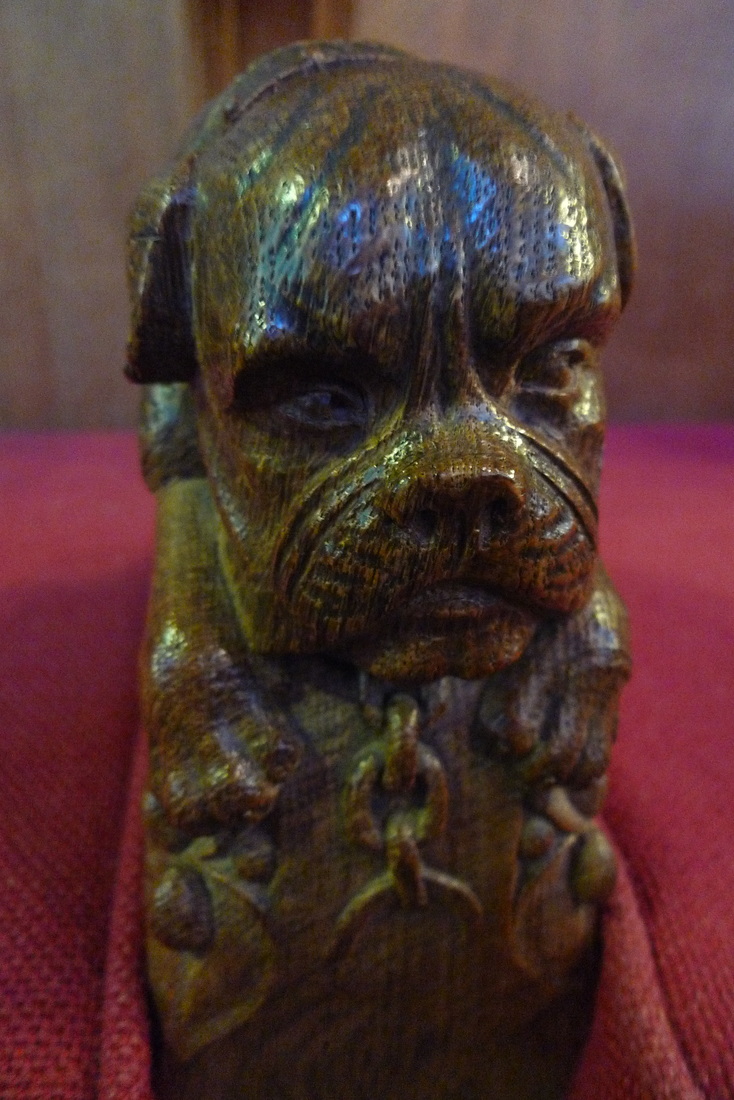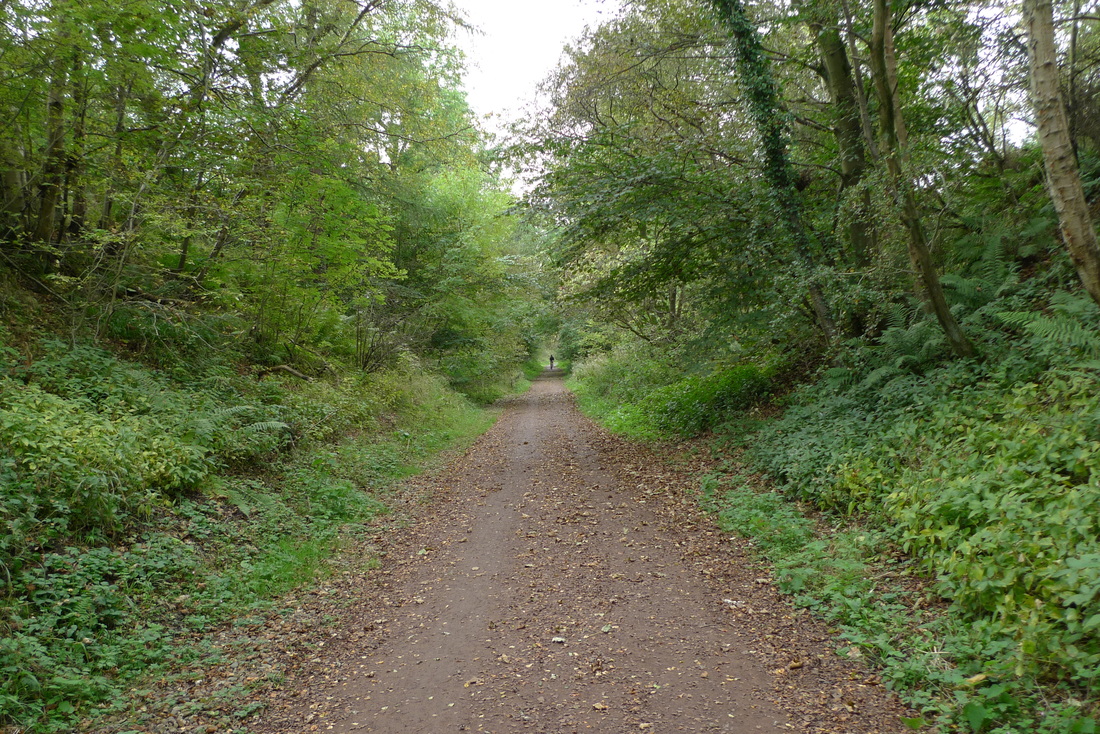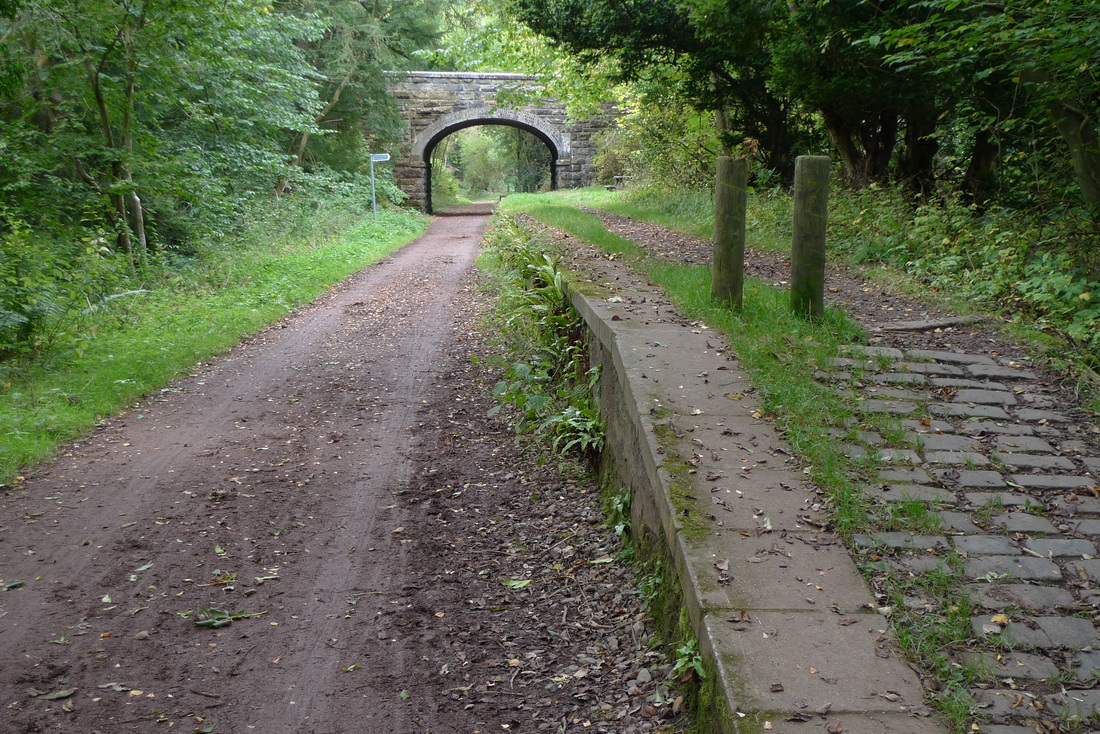|
Visit a stunning Cathedral and tour a whisky distillery in a day. There is a traffic-free path on a disused railway line between Dunblane and Doune that means you can easily combine a visit to the town's cathedral with a dram at the distillery that featured in Angels' Share, the 2012 Ken Loach film. Dunblane is six miles north of Stirling. It is well connected by regular trains (just over an hour from Edinburgh, under an hour from Glasgow). The stone station with crow-stepped gables is perfectly suited to the prettiness and small size of the town: Dunblane is one of my favourite towns in Scotland. It has an attractive position next to the Allan Water with the High Street climbing parallel to the Water. The water is fast flowing and when you cross the bridge between the station and the High Street you get an excellent view.
The glass was steamed up from the freshly baked batches and the pastry looked deliciously flaky. I watched locals peering at them and trying to decide which to have for lunch. I glanced up at a turreted bay window on the High Street and thought this must be a lovely flat to live in. I could imaging the sun streaming in on a bright day. At the top of the High Street the cathedral can be found in a precinct that is surrounded by pretty stone cottages. Dunblane Cathedral (free entry, check Historic Scotland for opening hours) dates from the 12th century. The exterior is quite plain and the real joy is to be found inside. The cathedral's roof is supported by two tiers of Gothic arches. Each arch has fine stone carving and is supported by a cluster of columns. You cannot help but look up to the ceiling and be impressed by the height of the structure that is kept in place by all these arches. There is a spiral staircase to the West Window where you can look down on this magnificence. It is quite unusual to have this level of access to such a building as I usually find these little staircases inside churches and cathedrals off limits, so it was quite exciting to be able to go up there. You also get a great close up of the stained glass window. I was really impressed with the wood carving on the choir stalls. The armrests are in the shape of different creatures- dogs, birds and even a camel. A lot of creativity, time and skill was taken over these- just look at the little dog with his nostrils and whiskers and the camel with the tassel hanging from the rein. Outside the cathedral there are signs for cycle route 765. Following these signs will take you towards the next part of this trip- Deanston whisky distillery.
Read the next part of this journey.
0 Comments
"Why do railway paths have a nack of being located in the most stunning scenery?" This was the question that popped into my head whilst cycling on the path between Bonnyrigg and Penicuik. It is a corridor of beauty with river, glen and impressive railway architecture.
You can cycle from Edinburgh to Penicuik and back again on mostly traffic-free, marked cycle routes. It is a full day out, about 38 miles return, although you can use the train to shorten the route. The ride can be broken down into three sections:
All you have to do is follow the blue cycle signage:
Edinburgh to Musselburgh- 5 miles
This route is described in a previous blog post. It is an easy, traffic-free, tarmac path for most of it. You can miss out this section by taking the 6 minute train journey from Edinburgh to Musselburgh. Musselburgh to Dalkeith- 5 miles The start of this route is marked with this gateway stamped with inspiring words- "freedom", "discover", "fresh"- about the exciting world that awaits you on the other side.
This is a disused railway path all the way with a flat tarmac surface. There is a very impressive bridge, with iron struts, that the path passes beneath:
If you cycle here in the autumn there is an abundance of brambles that you can snack on:
The path will be crispy with leaves, the trees stretching upwards and their branches touching to create a green tunnel.
This section could be bypassed by taking the train to Eskbank, a station on the new Borders Railway which opened in September 2015. It is about 1.5 miles from Eskbank to Bonnyrigg, where you can pick up the best part of the cycle route from Bonnyrigg to Penicuik.
Dalkeith to Penicuik- 9 miles The section through Dalkeith to Bonnyrigg is more urban and feels like you are being led mostly through newly built schools. You pass through housing estates with perfect, neat, little roads. No wonder cycle paths are routed through places like this- there is nobody around, so there is no traffic. At Bonnyrigg you can cycle alongside the surviving station platform. Someone has thoughtfully installed a traditional-style blue station sign to remind us what was once here.
The path soon heads into the countryside:
Rosslyn Castle station, which closed in 1951, has an incredible survivor from the railway era. The station name is written in small pebbles. It is great to see something so characteristic of its time still on show.
From Rosslyn Castle station there are walking paths that lead to Rosslyn Chapel, famous for its appearance in The Da Vinci Code bestselling book.
The platform at Rosslyn Castle also survives in very good condition:
At the bridge ahead I could see smoke. It smelt like coal burning. Was there a steam train about to appear? No, someone was burning something in a nearby garden, but it created a wonderful illusion.
The area provides a rich haven for wildlife, such as badgers, voles and roe deer. All that I managed to see was a grey squirrel with an acorn in his mouth. He stopped his rustling around to watch me. The path is popular with horse riders and local dog walkers. A brown collie started eating some horse manure and the owner shouted "Rex! Leave it" I didn't think that anybody really called dogs Rex. Collies do love horse manure and eat it for the nutrients that it contains. In the autumn there is the scent of crunchy fallen leaves and I love the sound they make when my tyres ride over them. The route has some of the best railway architecture I have seen on a disused train line. It includes two tunnels with lights. One of the tunnels, at Auchindinny, is immediatley followed by an impressive iron bridge with big round rivets on show.
Most spectacular of all is the Firth Viaduct. It has ten arches and soars 66 feet over the River North Esk. The view from the bridge down to the river valley is spectacular:
The source of the North Esk is the Pentland hills and the route provides great views of these hills:
Part of the line travels above a valley with views of fields and forests. I really like this barn with the rust red roof:
The section from Bonnyrigg to Penicuik is the highlight of this ride. The scenery is spectacular and the variety of railway leftovers, including viaducts, tunnels and platforms, makes it such an exciting cycle route. As far as disused railway paths go this is one of the best I have been on.
|
|
































